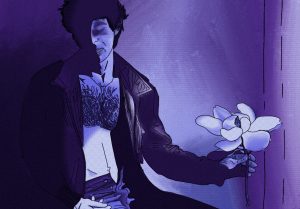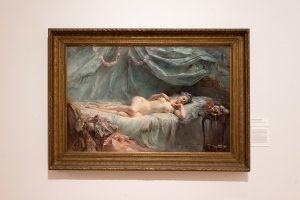
Steve Schapiro’s impressive photographic career has spanned five decades. After studying under photojournalist W. Eugene Smith, Schapiro became a photographer for Life magazine in the early 1960’s, documenting such historical moments as the Selma to Montgomery March, Robert Kennedy’s presidential campaign, migrant workers in Arkansas, and the aftermath of Martin Luther King Jr.’s assassination. When photo-centric magazines of the 1960s folded, Schapiro’s focus turned to Hollywood where he was hired as an on-set photographer for numerous motion picture films. In 1971, he worked on the set of Francis Ford Coppola’s The Godfather. There he met Robert DeNiro, who would four years later recommend him for the job on the set of Martin Scorsese’s Taxi Driver. Schapiro’s work has appeared in numerous books and publications including Look, Time, Newsweek, Rolling Stone, and Vanity Fair. He has had a number of books published of his work, including most recently The Godfather Family Album (2008) and Taxi Driver (2010), both published by Taschen. Schapiro’s work has been recognized world-wide, and his photographs are represented in both private and public collections including the Smithsonian Museum, the High Museum of Art, and the National Portrait Gallery.
Schapiro has been based in Chicago for the past eight years and currently has work on display at the Catherine Edelman Gallery. The exhibition, which will run until April 30, features his work from the sets of The Godfather and Taxi Driver. Quite the seasoned veteran with plenty of experience to share, Sixty Inches From Center sat down with Schapiro to discuss his career, working in Hollywood, and where he believes the future of photography is headed. His experiences are shared below.

MH: You mentioned to me recently that your dream was to become a great novelist. How did you eventually arrive at photography?
SS: I started photography when I was about 10 years old at camp. I enjoyed taking pictures there of clouds and of the lake. I was always interested in photography, but I was concerned about creating a whole world, and it seemed the novel was a good way of doing that. I became interested in writing [and] started reading a lot at 15 and 16 [years old]. I really had great respect for a lot of novelists. I went to Europe after college and came back and wrote a novel. I worked on it 24 hours a day, for about 3 or 4 weeks, and I finished it and brought it to someone I knew who was a publisher. Basically, there were four really good pages, but that was about it.
With writing you can never be positive in terms of what you’re doing—or at least I can’t—in terms of whether you’re really showing the images you want, whether you are describing things in such a way that it really forms a picture in someone’s mind. With photography you know that immediately. So I came back to photography because I was better at describing things with a camera than I was on paper.
MH: Do you think your education as a literature major at Bard helped prepare you to tell stories with images instead of words?
SS: I think what you gain in college—no matter what field you take—creates a background of knowledge and sense of things, which becomes very valuable in any field. Certainly studying literature has been extremely helpful in terms of photography. You can’t put your finger on what specifically its doing for you, but it helps you with your approach to your subject, to organize your stories, and what to look for in your photograph.
MH: What is the most memorable story you captured on film?
SS: Oh, I have a lot of them. I don’t know that I could pin it down to one story. The Selma March was incredible. Working with Bobby Kennedy was incredible and important. I started off as a journalistic photographer working for Life magazine and did a lot of stories about protests, civil rights, entertainment, Haight-Ashbury, and migrant workers, which were all very serious topics. And then when Life and Look folded, I saw the country was going gaga for entertainment. So I went to LA and started working on movies, and luckily the movies I worked on turned out to be very important ones.
MH: What was it like studying under W. Eugene Smith? How has his style influenced your own?
SS: Eugene Smith was really a course in printing. I learned how to print with selenium and cyanide in terms of making really intense whites and blacks. But what he showed was a humanistic approach to the world. Now it turns out in the end that it was his humanistic approach—in the sense that he tampered with what you would call “candid situations” and sort of created a lot of “candid situations”—because in his ideology there were certain things people should feel about the world and should emotionally sympathize with, and he did his best to point out those.

MH: Your work as a photojournalist has been political in nature and in some cases has inspired social change. Have you always been a political person?
SS: I’ve always been interested in politics and how the country was run. I also understood early that my views were in the minority. When I was a kid Adlai Stevenson was running for the presidency and absolutely everyone I knew was voting for Stevenson, and he didn’t do well at all! You sense that there was a wide spectrum of opinion—which there always is—and the more you understand that people develop preconceptions at an early age, they tend to hold onto them throughout life, for the most part. The views in this country in particular, and probably everywhere, are extremely varied and different.
MH: Do you believe all art is political?
SS: I believe all art is point of view. In photography, if I take your picture smiling or if I take your picture sad, and then I publish it, that’s how people are going think you are.
[Alfred] Eisenstaedt took a picture in the 1930s of [Josef] Goebbels, who was the minister of propaganda for Hitler. He took one picture of Goebbels sitting in a stiff back chair, in a dark suit, with two aides near him, and a sort of demonic look on his face. But fifteen minutes before he had taken a picture of Goebbels sort of smiling; [Goebbels] saw someone he knew and was smiling at them. Henry Luce was the editor of Time magazine and got these two pictures. It was his choice of which to run in the magazine, which would effect millions of people who got Time magazine [and] how they felt about the bourgeoning Nazi party and what was happening in Germany. As it turned out, he published the demonic looking image.
Basically, the photographer and the editor have enormous amounts to say in what kind of emotions or what kind of ideology people feel and represent. The photographer has enormous powers.
I [once] worked on a political campaign and the AP photographer I saw was working digitally. I saw that he was actually cleaning up his image and sort of changing his image on his laptop before he sent in his film to AP. So what AP saw was already something that was tampered with. Depending upon the ideology of the photographer, and how he photographed the person he was covering, and how he then dealt with it on his laptop, he had a lot to say with how people were going to feel about that person or what they would believe that person stood for.
MH: How did you make the transition from photojournalism to entertainment photography? How did you ever begin photographing stills for films like The Godfather and Taxi Driver?
SS: Well, first of all, I hopefully I have not made that as a complete change. And I’m certainly going away from entertainment at this point, largely. But basically, the ‘60s was called the golden age of photojournalism and it was easy to do stories on things that you believed in because there always was a magazine that would publish it. With the coming of television, that changed and there were less and less magazines. Then Life and Look folded. The Saturday Evening Post folded.

The first film I worked on was an Otto Preminger film, [The Cardinal]. I was hired because I did a lot of work for Life, and they figured, “Hey, if this guy can get us 6 pages in Life magazine, that’s great advertising and great publicity. Besides the fact that we can use the pictures in other areas.” And so I had started to work on some films while at Life and Look. When they folded, it seemed to me the country was going gaga for entertainment and I saw that eventually I would have to come to Los Angeles if I wanted to stay employed. And that’s what I did.
Then I started working with People magazine. It was a combination of stories that were not necessarily entertainment, but ran the whole spectrum, but I did start to work heavily on motion pictures. During that time period, in the ’70s, we happened to have a “golden era” of great films. I was lucky to work on The Godfather films, Taxi Driver, Chinatown, Barbra Streisand’s first movies, Funny Girl and Funny Lady, working with Steve McQueen, and just a whole bunch of actors and actresses who became iconic figures in the entertainment world.
MH: What was it like working the sets of Godfather and Taxi Driver?
SS: Working on movie sets is not that glamorous, particularly at that time. Lighting was a more difficult situation. Now we have much faster film and a lot of filming is done even on natural light. At that point, the lighting took enormous amounts of time. Every time you changed an angle you would have to re-light. You usually had an hour to an hour and half in between not only scenes, but in between lighting set-ups. You just sat around. If you weren’t good at reading, you spent a lot of time waiting on a movie set. What you got was cool, but you spent much more time waiting than filming.

MH: Though produced nearly forty years ago, these films continue to be classics. Why do you think they remain relevant to viewers today?
SS: We talked about creating a world before, [and] these films created worlds. They were skillfully done. The directors we’re talking about, Coppola and Scorsese, are people who were extremely thoughtful people. The whole nature of movies has changed. [Now] people have such a small period of attention; People pay attention for fifteen seconds or fifteen minutes and that’s really the optimum. We’ve gone into an age of special effects, and now 3D, and all kinds of gimmicks.
In my mind, the quality of films is not as good as it used to be, for the most part. You don’t see that many films that are really spectacular. You’ll see films that sell very, very well, but they’re not necessarily good films. You have a young audience that is really taken by Twitter and Facebook, and all of this has had a big effect on us, again, in terms of our attention span. The films I worked on were all well scripted, well acted, and extremely well directed. The interest seems to be in action, rather than telling a story. It’s more about action and how many explosives you can set off in the course of an hour and a half.
MH: In today’s world, celebrities like Justin Bieber or Lady Gaga are ubiquitous. How has the celebrity culture changed since you were working in Hollywood, and how has photography’s role changed within that culture?
SS: I don’t think the culture has changed that much. Henry Luce, in the ‘40s, ‘50s and ‘60s, used to get the make-readies. There’s a woman I know who used to bring the make-readies at Life magazine and [bring them up] to Henry Luce in his office. He would look at it, turn the page, and come to a war story and say, “That’s history!” And then he would come to a picture of the British Prime Minister and say, “Oh, that’s history!” Then he’d come to a picture of […] someone from Hollywood and say “Freaks! Freaks!” and turn to another picture and say “That’s history!”

Throughout time there have been people who capture attention one way or another, who have a degree charisma and a lot of energy. The Lady Gagas and all of that has existed for all time. It’s just that we live in an age where education isn’t taken the same way it was when I was growing up. People have been reading books now with Kindle and other devices like that. It looks like we might have a book revolution. We’re living through periods of time where you have two situations: In rough neighborhoods, kids think of “bitches and money” and they figure, “live it up now—I’m not going to live beyond the age eighteen” probably. In middle and upper class neighborhoods, it’s all Twitter and Facebook. I was with my daughter, who’s 19, walking along the street with her friend […] with their cell phones in front of their faces. It’s lucky they never tripped! That’s how they walk down the street—sending text messages to everyone. The bulk of their time is spent doing that.
Electronics and electronic games have opened up so much of an avenue for immediate gratification or immediate message sending. People don’t spend as much time reading or spending time with the classics, which I grew up on. The nature of communication constantly changes, and what’s interesting in one era is not necessarily interesting in another.
It’s funny, there used to be a club [in Chicago] called the Sardine Room. [On their walls are the names of] all the famous people at the time, indicating the Sardine Room was like all of these people. I was looking at that list just today and about three-quarters of the people on the list I knew. One quarter I don’t even know who they are anymore. And of the three-quarters I knew, I would say that someone growing up today would probably know one quarter. Everything changes, and all the heroes of our time disappear. I’ve been lucky in my career in the sense that many of the people I photographed in the ‘60s have remained iconic figures and people we respect and care about. Gradually, everything changes and your perspectives change. The nature of the world changes, and you have to be prepared for that.

MH: You have had a successful career that has spanned decades. How does one build a career like this? What advice do you have for artists who are just beginning their careers?
SS: When I started, magazines used to do long photo stories. Six to eight photo stories in which you had, at the end of it, a sense of the person or place. There was a flow to the pictures. It was a great opportunity for the photographer to really show a slice of life or a slice of society.
What has happened today, most magazines will try to sum up things in one picture. And the primary quality of that picture has to be information. Emotion and design are secondary. If the picture happens to have emotion and design that’s great, but that’s not going to be the criteria for it being published. Time and Newsweek still do things on war, hunger, and politics, but it’s basically with a staff of people they work with very closely. The opportunities for younger photographers to break into particularly journalistic photography is very slim. You either have to come up with a really outstanding idea and something that’s really important or captures imagination, or you have to think about books or figure out some way of doing something on the internet.
I stress that everyone has a different point of view; we all see things differently and that [one’s] point of view is unique. The more you deal with your unique way of seeing, and the more you photograph things you care about, the better off you’re going to be and the stronger images you’re going to come up with.
MH: Where do you think the future of photography is headed? I know this is very unpredictable, but where do you see the trends going?
SS: If you look at television and watch a political or entertainment figure when they’re with people, you’re beginning to see less and less cameras and more and more people photographing with cell phones. It’s very possible that the camera may become obsolete. As the quality of our technology increases—in the same way that the digital camera has replaced the film camera—it is very probable that the [camera phone will] replace the camera. They’re much easier and they’re less expensive. It’s really hard to see.
The other thing is that everyone is taking pictures today. To have a camera puts you certainly in a different position than most people; but to have an iPod, everyone has one and everyone is taking pictures of everything. So, I don’t know where it’s going. It would have been hard to predict the digital era when I first started out, and it certainly would have been hard to [predict] the iPod camera even at the beginning of the digital period. Everything changes. Communication constantly changes.


